Too Many Teens Are Driving Drowsy - Get Drivers Ed
Too Many Teens Are Driving Drowsy: Understanding the Risks and Solutions
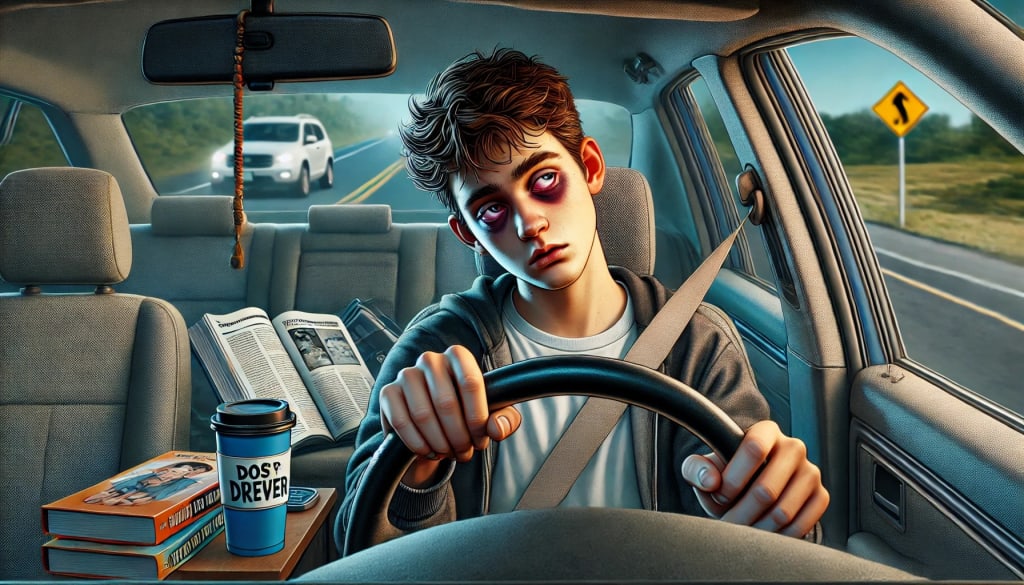
Driving drowsy is a serious issue that affects drivers of all ages, but it is particularly concerning among teenagers. With busy schedules that include school, extracurricular activities, part-time jobs, and social events, many teens are not getting enough sleep. This sleep deprivation can lead to dangerous driving behaviors. At Get Drivers Ed, we aim to educate teens and their parents about the risks of driving drowsy and provide strategies to combat this issue.
The Prevalence of Drowsy Driving Among Teens
1. Statistics and Studies
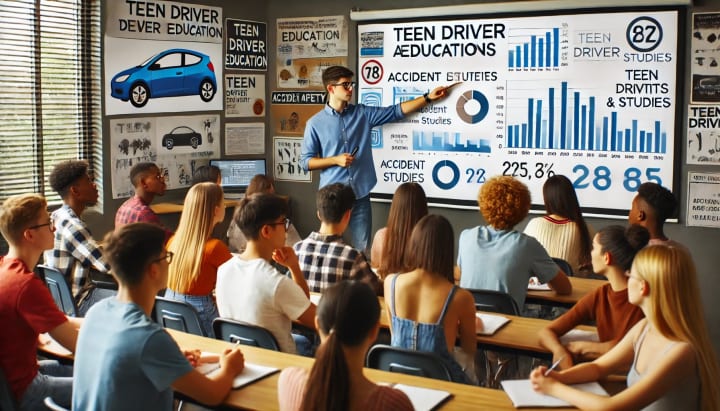
Recent studies show that a significant number of teen drivers are getting behind the wheel while drowsy. According to the National Sleep Foundation, over 50% of teen drivers report driving while feeling drowsy, and more than 15% admit to falling asleep at the wheel in the past year. These alarming statistics highlight the need for greater awareness and education on the dangers of drowsy driving.
2. Causes of Drowsy Driving in Teens
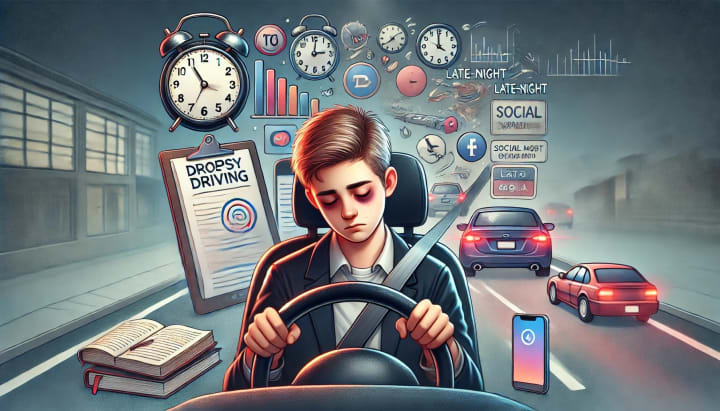
Several factors contribute to drowsy driving among teens:
Sleep Deprivation: Teens need about 8-10 hours of sleep per night, but many get far less due to early school start times, homework, and social activities.
Biological Changes: Teenagers' circadian rhythms shift during puberty, causing them to feel more awake at night and making it harder to wake up early in the morning.
Busy Schedules: Balancing school, sports, part-time jobs, and social life can lead to late nights and early mornings, leaving little time for adequate rest.
The Risks of Drowsy Driving
1. Impaired Reaction Time
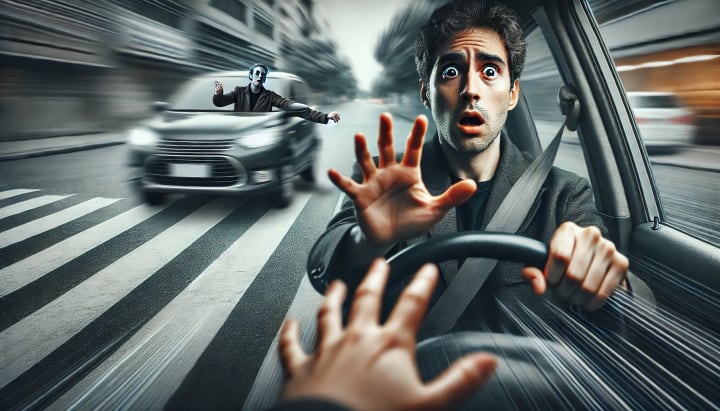
Drowsiness significantly impairs reaction time, making it harder for drivers to respond quickly to unexpected situations on the road. This delay can result in accidents, especially in high-speed or complex driving scenarios.
2. Reduced Attention and Focus
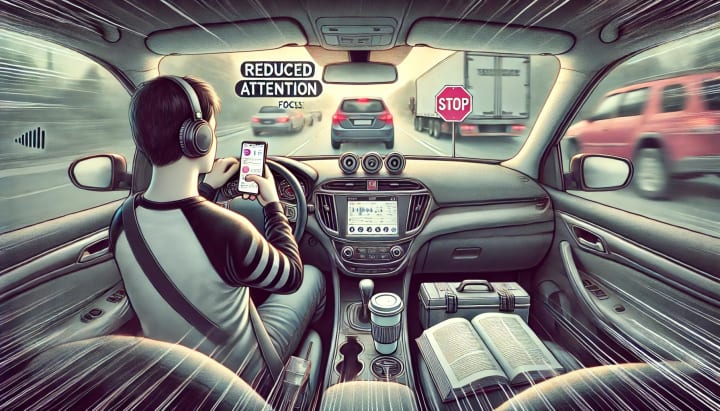
When a driver is drowsy, their ability to pay attention and stay focused on the road diminishes. This lack of focus can lead to missed signals, overlooked hazards, and poor decision-making.
3. Microsleeps
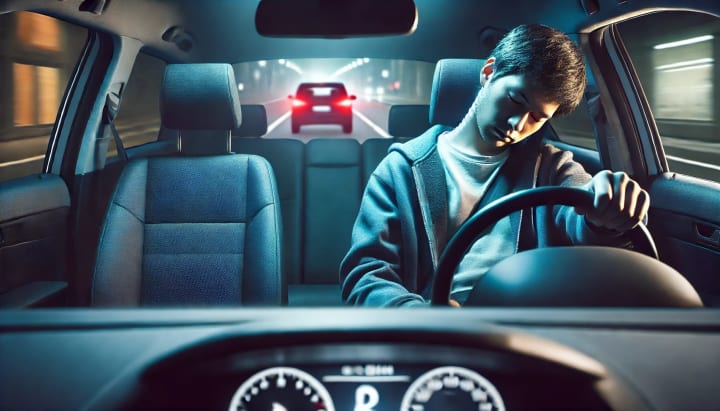
Microsleeps are brief episodes of sleep that last only a few seconds, but they can be incredibly dangerous when driving. During a microsleep, a driver is essentially unconscious, and even a few seconds of inattention can lead to a catastrophic accident.
4. Increased Risk of Accidents

Drowsy driving is a leading cause of accidents, particularly among young drivers. The AAA Foundation for Traffic Safety estimates that drowsy driving is responsible for approximately 10% of all crashes. For teens, who already face a higher risk of accidents due to inexperience, the added danger of drowsiness can be deadly.
Solutions to Combat Drowsy Driving
1. Prioritize Sleep
Encourage teens to prioritize getting enough sleep each night. This may involve setting a regular bedtime, limiting screen time before bed, and creating a sleep-friendly environment. Ensuring teens understand the importance of sleep can help them make better choices about their schedules.
2. Educate on the Dangers
Education is key. At Get Drivers Ed, we include lessons on the dangers of drowsy driving in our drivers ed program. Teens learn about the risks and how to recognize the signs of drowsiness. Understanding these dangers can help teens make safer decisions.
3. Plan Ahead
Teens should plan their schedules to ensure they are well-rested before driving. This might mean avoiding late-night activities or finding alternative transportation if they are too tired to drive safely. Time management skills can play a crucial role in preventing drowsy driving.
4. Take Breaks
During long drives, teens should take regular breaks to rest and recharge. Even a short nap can significantly improve alertness and reduce the risk of drowsy driving. Rest stops and breaks are essential for maintaining focus during extended periods of driving.
5. Carpooling and Shared Rides
Encouraging carpooling or shared rides can help reduce the burden on any one teen driver. This can be especially useful for early morning or late-night activities. Sharing driving responsibilities can reduce fatigue and promote safer driving practices.
6. Use Technology
There are various apps and devices designed to detect drowsiness and alert the driver. These tools can be an additional safety measure to help prevent drowsy driving accidents. Technology can provide real-time feedback and help drivers stay awake.
The Role of Get Drivers Ed
At Get Drivers Ed, we are committed to educating teen drivers about the importance of safe driving practices, including the risks of drowsy driving. Our comprehensive drivers ed program covers all aspects of driving safety, from basic vehicle operation to advanced defensive driving techniques.
Our program includes:
Interactive Online Modules: Engaging content that educates teens on safe driving habits, including the dangers of drowsy driving.
Practical Driving Lessons: Hands-on experience with certified instructors who emphasize the importance of staying alert and rested while driving.
Defensive Driving Techniques: Training on how to recognize and react to potential hazards, including signs of drowsiness.
Conclusion: Stay Awake and Stay Safe with Get Drivers Ed
Drowsy driving is a significant risk for teen drivers, but with the right education and habits, it can be prevented. At Get Drivers Ed, we are dedicated to helping teens become safe, responsible, and confident drivers. Enroll in our drivers ed program today to ensure your teen is equipped with the knowledge and skills they need to avoid the dangers of drowsy driving. Visit Get Drivers Ed to learn more and get started.
About the Creator
Get Drivers Ed
Discover expert tips, driving safety insights, and the latest trends from Get Drivers Ed. Your online guide to mastering the road. Learn, drive, and lead!
Enjoyed the story? Support the Creator.
Subscribe for free to receive all their stories in your feed. You could also pledge your support or give them a one-off tip, letting them know you appreciate their work.

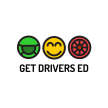




Comments
There are no comments for this story
Be the first to respond and start the conversation.